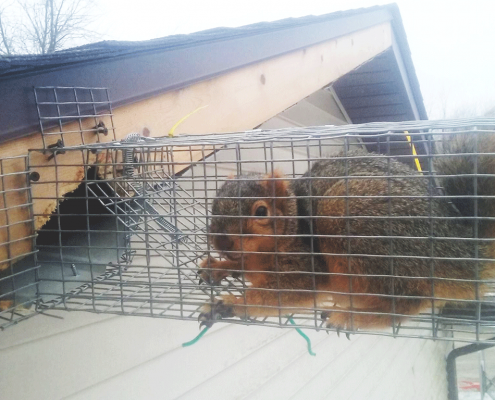
Squirrel solutions
Squirrel Description
Gray Squirrel
Red Squirrel
Gray Squirrel
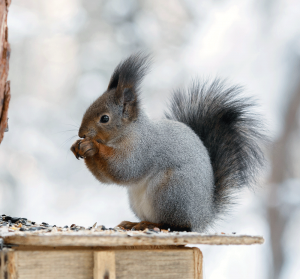
How to Identify A Gray Squirrel
There are two species of gray squirrels. Eastern gray squirrels or Sciurus carolinensis are the most common species of squirrel. They’re native to Eastern North America and they’re found everywhere. They’ve also been introduced into Australia, Britain, Italy, and South Africa, but they have turned into a problem in Europe because they are displacing native squirrels. They are also considered invasive in Australia.
On the other hand, Western gray squirrels or Sciurus griseus only live in California, Oregon, and Washington. Despite their similarities in appearance, the two species actually have different evolutionary origins. Eastern gray squirrels are related to fox squirrels and red squirrels, while the western gray squirrels are related to Abert’s squirrels.
Red Squirrel
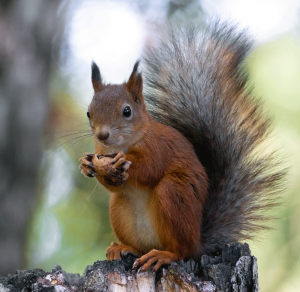
How to Identify Red Squirrels
Eurasian red squirrels or Sciurus vulgaris are small, tree-climbing squirrels found across Europe and parts of Asia. It is also the national mammal of Denmark. In Great Britain, Ireland, and Italy, red squirrels have drastically dwindled down in numbers due to the
introduction of the eastern gray squirrel in their territories. It is also listed as being of least concern on the IUCN Red List of Threatened Species.
On the other hand, the American red squirrel or Tamiasciurus hudsonicus, commonly known as pine squirrels, are found across North America, typically wherever conifer trees are common in the area. These regions include the Rocky Mountains and across Canada. As a result, these types of squirrels aren’t found in the south eastern United States and places like the Great Plains, since conifer trees aren’t common in these areas.
Although these two squirrels share the same name, they have a number of differences. Read more below to see their differences and similarities!
Gray Squirrel
Western gray squirrels are quite larger than other types of squirrels. Their body measures about 12 inches long, and they have long, bushy, 12-inch, white-edged tails, normally reaching a length of 24 inches overall. Their long tails also help them balance as they jump from tree to tree and it always stays in a curved “S” shape. They usually weigh around 350 to 950 grams, and their tail largely contributes to their weight. Their dorsal fur can be a dark gray or a salt-and-pepper shade and the underside is pure white, but their tails can also have black spots. Their large ears don’t have any tufts, and it turns into a reddish-brown color in the winter. These tree squirrels undergo two changes every year, a head-to-tail molt in the spring and a head-to-rump molt in the fall.
Eastern gray squirrels have smaller bodies. Their bodies measure about 10 inches, and they have 8-inch tails. They usually weigh around 450 to 680 grams. Their fur is a mixture of black, white and brown, and white-tipped hairs that all combine to create an illusion of gray fur. Their fur also changes seasonally. During the summer, they have a yellow-brown coat that changes into a thicker coat of true gray in the winter. Their underparts range from a light brown to white, and it usually lightens further in winter. Their ears are tan and become white-tipped during the winter.
The front tracks of the eastern gray squirrel can measure from 1 ¼ to 1 ¾ inches long and ⅝ to 1 ⅛ inches wide. Their hind tracks can range from 1 ¼ to 3 ¼ inches long and 1 to 1 ½ inches wide. Western gray squirrels have significantly larger tracks and it is nearly impossible to mistake them for their smaller eastern gray counterparts. A rule of thumb is that if the front tracks are more than 1 ¾ inches long and 1 ⅛ inches wide, and their hind tracks are more than 3 ¼ inches long and 1 ½ inches wide, then it is certainly the tracks of a western gray squirrel. All squirrels produce tracks with four toes on the front and five toes on the hind feet. This distinguishes them from raccoons who imprint 5 toes on both front and hind feet. The foot placement is also symmetrical, while a rabbit’s track will slightly be differently positioned.
Gray squirrel droppings resemble grains of rice and have soft and round sides. The size of eastern gray squirrel droppings is usually 1 cm in length and 0.4 cm in width. Since the western gray squirrel is larger than the eastern gray squirrel, their droppings are also larger.
Squirrel droppings begin as dark brown and become paler over time, and this produces a variety of shades that look like wild rice. Squirrels tend to deposit clumps or groups of waste in particular locations rather than dropping everywhere. Their droppings are usually found in exits/entrances.
Both gray squirrels rely on vocal signals. Eastern gray squirrels produce different kinds of sounds for various occasions. Females moan and produce a “kuk” and “qua” kind of sound before and after they mate. Young squirrels also cry when alarmed or disturbed, while adult squirrels “buzz”, emit slow “kuks” and low moans, and sometimes vocalize a shrill repetitive “qua” sound. These sounds are usually accompanied by foot stamps and tail waves.
Western gray squirrels are known to emit a chirping sound of various frequencies, and studies suggest that these sounds even display different emotions like laughter and sadness. Although they are much shyer than their eastern counterparts, western gray squirrels are also known to “bark” at unwanted guests and predators in their territory. This is also accompanied by rapid tail movements. They also give a hoarse chirp when they are disturbed.
Both species of gray squirrels have similar diets, but they eat different proportions. Both eat plant shoots, fruits, and fungi. They also eat a mixture of mast or nuts and tree seeds. Western gray squirrels eat more truffles and mushrooms and their diet consists of more than 50% truffles.
The western gray squirrels’ food source also depends on their environment and habitat. Nut and acorns will be the primary diet of those who live in hardwood forests, while tree seeds and pinecones will be the diet of those in coniferous forests. They also eat fungi, sap, berries, and insects. Fungi are considered important food during spring and summer, while buried acorns and pinecones are fall and winter staples.
Eastern gray squirrels normally feed on flowers and buds of more than 24 species of oak, 10 species of hickory, pecan nuts, and walnuts. They also eat maple, mulberry, ginkgo tree fruits, and gymnosperm catkins such as hemlock, pine, and cedar. Additionally, they eat fungi and flowers. Their winter food consists of different kinds of crops such as wheat and corn, while their summer food consists of insects. Insects are also especially important for younger squirrels.
Both squirrels store mast through burying to prepare for winter. Western gray squirrels tend to bury their mast individually, while eastern gray squirrels bury theirs in large quantities in communal ground.
Red Squirrel
Eurasian red squirrels are red and have white or cream-colored underbellies. Their coats tend to darken to a gray shade during wintertime. This red squirrel is actually popular for their shockingly orange-red fur, but most red squirrels can range from bright ginger orange to a dark brown color. They are quite smaller than their gray squirrel counterparts. They have a head to body length that ranges from 7.5 to 9.5 inches, and a tail length of 6 to 8 inches, making their total length 13.5 to 17.5 inches. They usually weigh 250 to 340 grams, and both males and females are the same size. American red squirrels also have red-brown coats and a cream-colored underbelly.
During winter months, a black stripe will be visible between their red and white fur. Their tail is also a red-brown color with black edges. They are smaller than their Eurasian counterparts, with only a total length of 11 to 13 inches. They usually weigh less as well, ranging from 190 to 285 grams.
Like most tree squirrels, red squirrels have sharp curved claws that allow them to climb tree trunks. Their long tail helps them to balance and steer when jumping from tree to tree, and it also warms them up during cold days! They have strong hind legs that enable them to jump farther distances, and they’re also able to swim.
The most obvious way to tell an American and Eurasian squirrel apart is their geographical locations. The second way is by looking at their ears. Where Eurasian red squirrels have tufts on their ear tips, American red squirrels have none.
Red squirrels hop around in order to move about. When they do hop, their little front feet land first, followed by their late hind feet which pass to the outside and around the front feet to land in front of them. When one finds the tracks of a red squirrel, they would notice tracks that are patterned described in the way above. What makes their tracks unique from other animals is that their tracks have front feet somewhat side by side. Their tracks also tend to have a “square-sided” pattern because of their parallel front feet, and this makes the tracks unique from other types of squirrels. When taking a closer look at the tracks of a red squirrel, one must note that they have 5 toes on their hind feet and 4 on the front, and the distance of the front and hind can range from about 4 to 30 inches. The size of the tracks itself should be about 2 ⅞- 4 ½ inches, and this is still true when the tracks are in snow
Red squirrel droppings look somewhat like rice pellets and begin to darken and pale over time, giving it a number of shades. When the droppings are fresh, it tends to have a dark brown color, but as the droppings age they begin to lighten up. It’s helpful to note that if you find droppings that have a variety of shades, the squirrel has most likely been there for a while. This squirrel shares the same size of droppings as a flying squirrel, which has the dimensions of ⅜ inches in length and ⅛ in diameter. Compared to rat droppings, squirrel droppings tend to have softer and more circular sides, while rat droppings have a thicker center and pointier sides. Contrary to popular belief, unlike rats and mice, squirrels also tend to leave their droppings in certain spots (usually in clusters) and not scattered everywhere.
Much like other animals, red squirrels use their ears to pick up sounds by rotating them and also use their ears to express themselves. They have keen senses, meaning their sight, hearing, smell, and touch are all enhanced. They communicate through body signals and sounds, and this is done through warning calls and chemical cues. Sometimes, if the squirrels are part of a family, touch is also a way of communication. Red squirrels give off a long rattling buzz with its notes slowing and fading if another one of its kind enters its territory. At higher intensities, they tend to jerk their tails and stomp their feet. Sometimes neighboring squirrels respond with the same sound and motions, creating a sort of rhythm. These sounds and motions are meant to assert dominance over one’s territory, and this is the reason why squirrels tend to be more spread out. A small simple “whuk” is the first sign of an alarm that someone has crossed a territory. Squirrels have even aptly been given the nickname “chatterboxes” due to the excessive noise they make. It is noted that more often than not, squirrels are heard before they are seen. They have soft “clucking” and high pitched bird-like noises as well as the territory assertion noises mentioned earlier.
Eurasian red squirrels have a diet that mostly consists of conifer tree seeds, nuts, berries, and young shoots. They are mostly herbivorous, and their diet can include pine seeds (which are their favorite), hazelnuts, green acorns, fruit, lichen, fungi, and larch seeds. The carnivorous side of their diet consists of insects and other mammals, and they also occasionally eat bird eggs and chicks.
On the other hand, American red squirrels eat mostly white spruce seeds, mushrooms, willow leaves, and bearberries. They also eat poplar buds and catkins, flowers and berries, mast, bird eggs and snowshoe hare leverets. It’s also interesting to note that American red squirrels eat a variety of mushroom species, including some that are poisonous to humans.
Like most squirrels, red squirrels tend to store food for winter. What is unique about them is that instead of burying individual stashes of nuts, they will build up large storages that will be buried and tucked under logs and tree cavities. They prevent drying out green cones by burying them, and fungi storage is placed high in trees for them to dry out. Red squirrels are also unique in a way that aside from eating small invertebrates and insects, they also successfully catch and eat young rabbits, frogs, and salamanders.
During the spring, red squirrels add sap to their diet and are known to gnaw the tips of sugar maple to reach the sap. Black walnuts and butternuts are also their favorites. Another interesting thing about red squirrels is that you can see where they ate, playfully nicknamed as their “dining tables”. A variety of cones, seeds, and insects will be found at these dining tables and they’re usually logs, stumps, brush piles, rocks, and even fungi mushrooms.
Fox Squirrel
Flying squirrel
Fox Squirrel
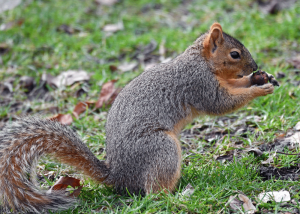
How to Identify A Fox Squirrel
The fox squirrel or Sciurus niger is Minnesota’s biggest tree squirrel. Its scientific name means “black” and it refers to the first recorded fox squirrel’s black fur. Nowadays, there are many color combinations that exist within the species. Fox squirrels are widely found in eastern North America. They prefer savannah-like environments and widely spaced trees.
They also prefer oak, cypress, hickory, mangroves, and pine forests. These preferences also allow them to do well in urban environments. That’s why they can be found anywhere from the southern tip of Florida all the way to the Canadian border.
Fox squirrels do not have bodies as agile as red or gray squirrels, and they sometimes comically fall from trees but they rarely get hurt. Their muscular bodies and sharp claws also help them get back on their feet.
Flying squirrel
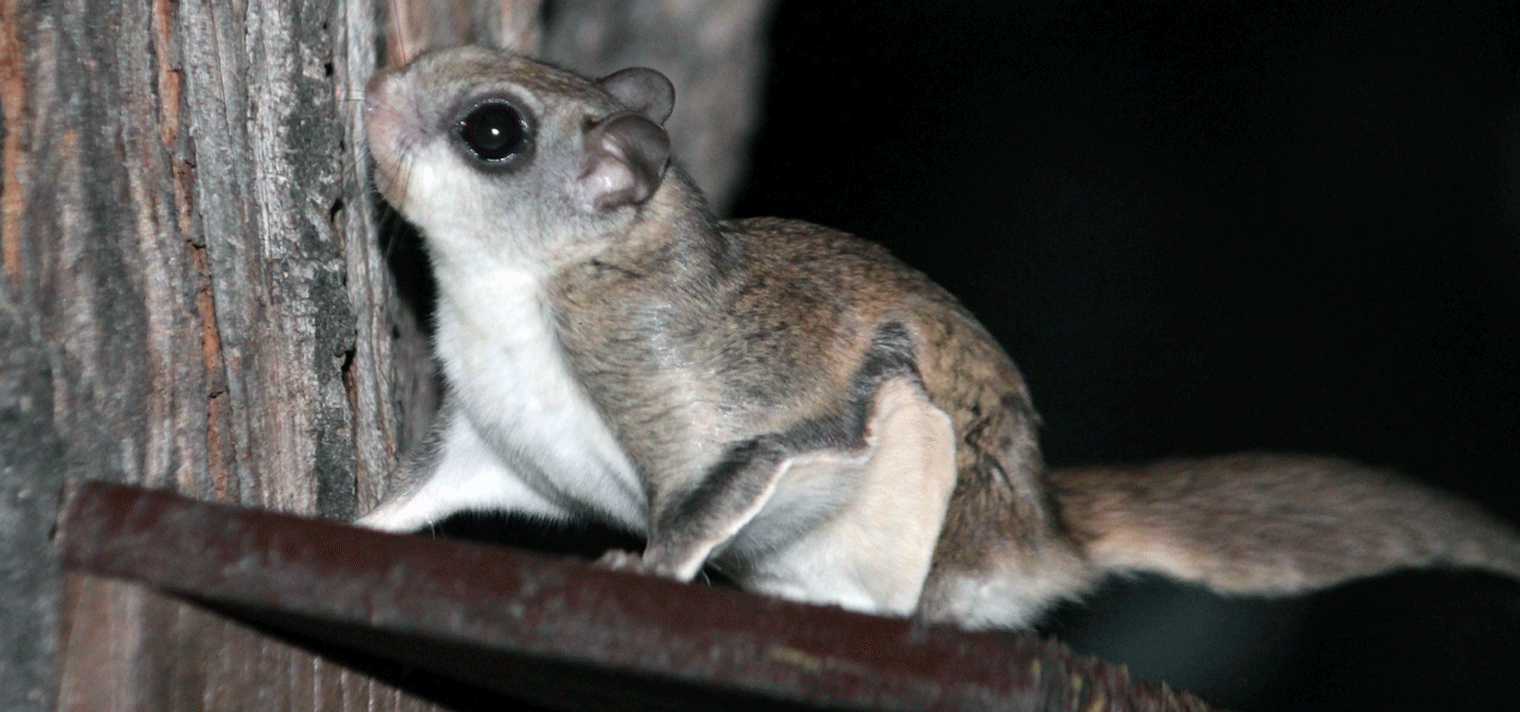
A flying squirrel is a tree squirrel that can’t fly, contrary to its name, but can glide due to a special membrane between their front and back legs. A common misconception about them is that they are just regular squirrels that can “fly,” but this is far from the truth.
Their ability to glide is more than just jumping from one tree to another, flying squirrels do complex maneuvers like twisting and turning, giving them the ability to avoid trees and predators. It only takes a few weeks for a newborn to learn how to glide and a few
more weeks for them to learn how to do maneuvers like an adult.
Flying squirrels can glide over 100 feet in the air before landing. They land by clinging onto a tree with their claws rather than landing on the ground. When squirrels forage, they go to both the trees and the ground because they contain food that the flying
squirrel needs.
The best time of the year to watch flying squirrels is during the autumn season because they are more active during this time, before the upcoming winter season. Flying squirrels do not hibernate and still go out to forage during the winter season, but less often and only when needed.
Mother flying squirrels are protective and caring for their young. They go as far as building a second nest, similar to humans remaking a room to make it suitable for a baby. Mother flying squirrels would not hesitate to fight bigger predators if it meant
keeping their younglings away from danger.
Flying squirrels have many traits that differentiate them from regular squirrels. We will be going over these differences and diving more into these traits.
Fox Squirrel
Fox squirrels are medium-sized squirrels that normally range from 15 to 20 inches in length, but some can grow to lengths of up to 29 inches. They’re larger than your normal squirrels and some hefty fox squirrels even weigh more than 2 lbs. Their fur color ranges from a pale gray to black with white feet. The most common color combination is reddish-brown, like a fox! This combination is achieved through a red background coat and brown tipped fur. Their belly fur is also always a lighter shade than their coats.
There are three distinct color combinations. In western regions, the fox squirrel is usually in shades of gray with rust-colored fur on its undersides. In north-eastern regions they have gray colored fur with yellowish undersides. In southern regions, their fur is black and brown, with a white stripe on their face and white-tipped tails.
Their tails are well furred and they can have a length of 8 to 13 inches. The fringes of their tail commonly have the same shade as their belly. Their belly and tail color are always lighter than their coats. They have no sexual dimorphism, meaning that there is no notable difference between male and female fox squirrels, aside from their genitalia. Their ear tufts often develop during winter, and they have adaptations for climbing including sharp claws and fully developed flexors.
Fox squirrel tracks often show a gallop pattern, with the front tracks positioned side by side, instead of diagonally. Like most squirrels, they have four front tracks and five hind tracks, but the fox squirrel’s tracks are bigger than gray squirrel tracks. Their footprint also tends to be straight rather than curved, as is common in red squirrels.
Their front tracks can range from 1 to 1.5 inches in length and width, while their hind tracks can range from 1 ¼ to 2.5 inches in length and width. Their hopping pattern places their front feet behind their hind feet, with each group of 4 tracks spanning 4 inches. During walking strides, the distance covered between strides range from 4 to 6 inches, with a trail width of 3 ¾ to 4 ¼ inches. The distance between bound strides is commonly about 16 inches, but with enough running and the right pace, it can reach up to 30 inches. The trail width can range from 3 ¾ to 7 inches.
Fox squirrel droppings resemble grains of rice. They’re cylindrical in shape with rounded edges. Since they tend to be bigger than a gray squirrel, their droppings are often larger as well. Their droppings usually have a size of 1 ¼ cm in length and ¼ cm in width. Because of their diet, squirrel droppings start as dark brown or red in color which fades and becomes paler over time. Fox squirrels defecate at random, but clustered droppings are often found near feeding areas. Their droppings can also sometimes be mistaken as rat droppings, but squirrel droppings are bulkier than rat droppings and they change color over time.
Although fox squirrels have well-developed senses of hearing, smell, and sight, they also use sounds for communication. These sounds can range from barks, distress screams, chatters, and whines. A bark is one of the most common sounds squirrels tend to make, and they usually make it in a series of 6 to 10 barks at a time. Chatter barks are heard when the squirrel is startled or alarmed, and a high-pitched whining can be heard when they are mating. They also chirp and whistle, mainly when they experience mild stress. Fox squirrels threaten one another by standing upright with their tail flicking behind them.
The food habits of the fox squirrel typically depend on their geographical location. In springtime, elm buds, insects, bird eggs, and mulberries are their primary food sources. Their summer staples consist of corn in milk, berries, plums, and cherry pits. A few other summer foods include fruits of box elder, black oak acorns, black maple, and elm buds and seeds. During the fall, they rely on acorns, beechnuts, butternuts, hazelnuts, hickories, black walnuts, and pecans. In winter, they feed on Osage oranges and buried acorns and hickory nuts.
The diet of a fox squirrel mainly consists of mast, acorns and other seeds. The fox squirrel eats acorns, hickory, beech, mulberry, walnut, and Hawthorne seeds. They also eat fruits and berries, green shoots and buds, flowers and barks, sap, fungi, and crops such as wheat, soybeans, and corn. The mast commonly comes from different kinds of oak, such as the bluejack oak, live oak, post oak, and southern red oak.
They also eat meat on occasion, but the carnivorous part of their diet mainly consists of insects and invertebrates like moths, spiders, and insect larvae. They also consume birds and their eggs, and even dead fish.
Fox squirrels also tend to gnaw on bones and antlers to obtain calcium and other minerals that they need. Like most squirrels, the fox squirrel stores nuts for winter, which they then locate through their amazing sense of smell. Many of these nuts are never dug up again, and they go on to sprout new trees, thanks to the fox squirrels!
Flying squirrel
There are lots of similarities between flying squirrels and regular squirrels. Flying squirrels have longer tails compared to regular squirrels, and have “wings” called a patagium, which they use to glide from one place to another. This is useful when running away from predators such as snakes, raccoons, and coyotes for example.
Flying squirrels have big eyes because they are nocturnal, meaning they forage at night, and this allows them to see better in the dark. Another trait to take notice of is the color of their bellies. This can be used to differentiate species like the northern flying squirrel having gray fur and a southern flying squirrel having white fur.
Some people confuse sugar gliders for flying squirrels because they look alike, both are rodents and glide. However, flying squirrels are quieter with plain fur, and can only be found in North America, Europe, and Asia. The difference between them is how their babies are born and raised. Baby flying squirrels are kept inside the womb for a long time while Sugar Flyers are born earlier and spend time inside their mother’s pouch.
You may be wondering how flying squirrels leave tracks and how these tracks are different from regular squirrel tracks.
When searching for tracks by flying squirrels expect to find landing marks made by their descent after gliding across the forest. Their patagium, the membrane between the front and back leg which allows them to fly, may skid along the ground and leave marks. The front and back legs leave different footprints. The back legs tend to leave a longer track compared to the front legs. The front foot has four toes while the back foot has five toes with one toe being shorter than the others.
Fox squirrel droppings resemble grains of rice. They’re cylindrical in shape with rounded Flying squirrels leave small pellets that tend to pile up. The color of the pellets indicates the freshness of the droppings, so darker pellets being fresh and lighter pellets being stale. If a mix of these droppings is found, this may indicate a nest of flying squirrels is near. A nest of flying squirrels consists of shredded bark and can be located in an attic.
Flying squirrels make cheeping sounds, which are high pitched and excited sounding squeaks. Flying squirrels are social creatures and often talk to each other, especially during the night time due to their nocturnal activities. They often talk about where to find food and warn each other of predators lurking in the area. During the wintertime, this is especially important because flying squirrels need to huddle with each other to preserve the warmth in their bodies.
These types of squirrels are omnivorous. Some species of flying squirrels are more carnivorous in their diet when compared to other species by consuming bird eggs, insects, and even smaller mammals, apart from nuts, seeds, and fungi. The flying squirrels need a balanced diet so they consume the needed nutrients from both of these sources. The food they consume is primarily composed of easily found food during the nighttime because of their nocturnal foraging instincts.
With some of the different traits and characteristics of the Flying Squirrel noted, some view them as pests, and others view them as cute pets. No matter what the reason, these small critters are anything but ordinary. Their ability to glide makes them stand out and is studied by experts for Wingsuit flying.
Flying squirrels are amazing to look at if you can catch a glimpse of them during the nighttime. They can even be kept as pets, depending on your state laws, and they make for good companions and can even be trained. They bond well with humans and they live as long as pets, up to 15 years, compared to their wild counterparts which live up to only 10 years.
Flying squirrels are one of the many reasons why we should protect our environment. Learning about these critters and the wonderful things they can do reminds us that we share the earth with other creatures. We all need to do our part by keeping it clean and healthy for the future of both humans and animals.
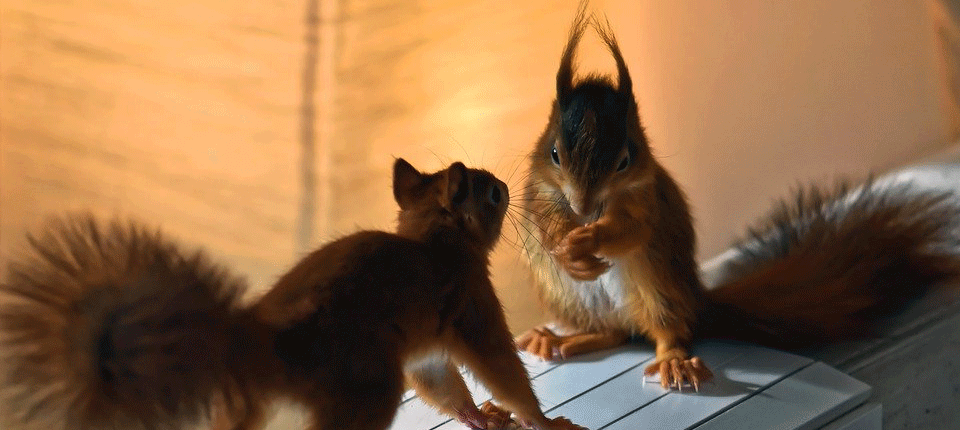 Yes, infestation! Squirrels may be cute little critters, and with almost nothing bad about them in films and TV, but don’t forget squirrels are rodents. The first things that come to mind when mentioning the word rodent are rats and mice. Unfortunately, that association puts squirrels in the pest department. Which is true. Squirrels tend to gnaw at stuff, causing damage to property and their never-ending hunger puts your food and supplies in their sights. Your comfortable and secure home becomes a prime candidate for nesting. If you live in an area with a large squirrel population, there’s a chance your home can suffer from squirrel infestation. Below are possible ways to see if your home is already infested:
Yes, infestation! Squirrels may be cute little critters, and with almost nothing bad about them in films and TV, but don’t forget squirrels are rodents. The first things that come to mind when mentioning the word rodent are rats and mice. Unfortunately, that association puts squirrels in the pest department. Which is true. Squirrels tend to gnaw at stuff, causing damage to property and their never-ending hunger puts your food and supplies in their sights. Your comfortable and secure home becomes a prime candidate for nesting. If you live in an area with a large squirrel population, there’s a chance your home can suffer from squirrel infestation. Below are possible ways to see if your home is already infested:
- Strange noises. If noises are keeping you up at night like strange rustling and/or scratching noises inside the walls could either mean mice or squirrels. It’s possible they chewed their way into your house and made a comfortable nest, hence the busy rustling and scratching.
- Chewed entry points. If you hear wall noises, take the time to inspect the exterior of your home. Do your best to inspect for holes on the walls, large enough to fit squirrels, and if the walls have been chewed on, making it a possibility that your home is infested. Keep in mind that any damage or gap will give them entry-point.
- Foul odor. Apart from the strange noises, do you smell anything funny that wasn’t there before? Is the cause of the smell visible? That could probably be squirrel urine or droppings. Your home could already be a squirrel outhouse, or worse, there could be dead, rotting squirrel within the walls. If you’re familiar with squirrel odor, you don’t need to look into the other signs but if not keep reading.
- Flickering Lights. Do your lights flicker in your home, or hear strange noises within the walls making it feel haunted? That could be squirrels messing with your home’s internal wiring. Squirrels don’t like to gnaw on things, but they have to because they need to file down their ever-growing teeth and will chew on almost anything, including electrical wiring. Sometimes, they end up electrocuting themselves and die inside your walls, hence flickering lights, and foul odor. This makes for a haunting atmosphere doesn’t it?
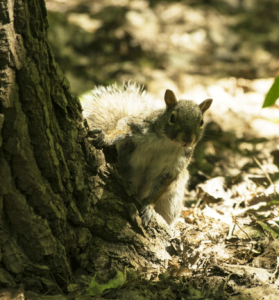 Nests. With a possible squirrel-made nest inside your home, (also called a drey), you might notice an increase in squirrel activity outside. That could be them going to and from your home during foraging activities.
Nests. With a possible squirrel-made nest inside your home, (also called a drey), you might notice an increase in squirrel activity outside. That could be them going to and from your home during foraging activities.
In summary, if there are strange noises within the walls, chewed up entry spots outside your home, foul odors, increased squirrel activity, and worse, chewed up electrical insulation, you have a severe squirrel infestation. Squirrel infestation is a serious matter because their urine, droppings, and fur could cause serious health problems, if not some discomfort. You could face some property damage because they like to chew through things, and their quest for food could threaten your food storage. Squirrels also cause a serious risk to your home if they chew through electrical wiring. Hence, if you suspect a squirrel infestation, you’ll need to have them removed by contacting a professional animal control specialist immediately.
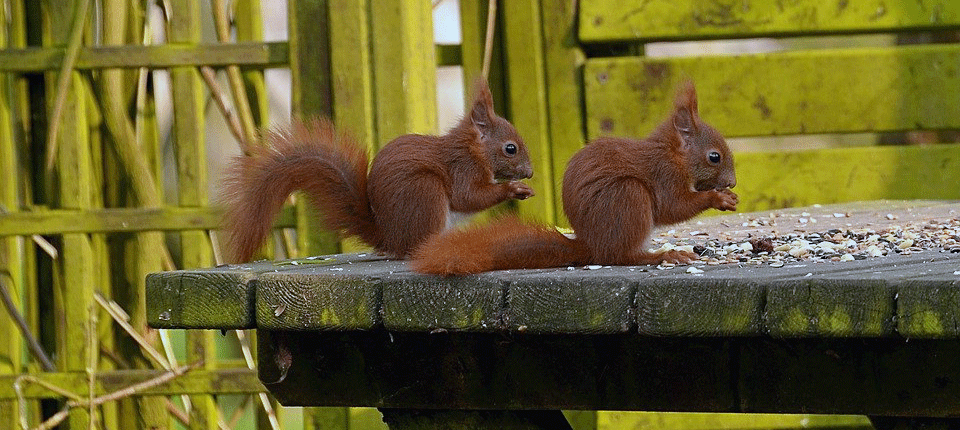 Although squirrels are relatively small creatures, don’t underestimate the damage that these little fellas can cause. Squirrels have front teeth that continually grow throughout their lives, so don’t think that they’ll easily get tired of chewing anything. They also naturally trim their teeth on pine-cones and acorns, so imagine if they don’t have anything natural to chew on in your home!
Although squirrels are relatively small creatures, don’t underestimate the damage that these little fellas can cause. Squirrels have front teeth that continually grow throughout their lives, so don’t think that they’ll easily get tired of chewing anything. They also naturally trim their teeth on pine-cones and acorns, so imagine if they don’t have anything natural to chew on in your home!
So, how much damage can a squirrel really cause in a home?
Building Materials
Since they’re expert climbers, squirrels can easily get to your roof. They can then chew through your roof shingles or any weak spot that they can see. Once inside, they’ll chew through insulation, wires, and anything in between to build the perfect nests. Insulation is one of their favorite materials because it’s warm and easily moldable. They’ll trample and pile clumps of insulation until you’re left with nothing. Aside from the lack of warmth and replacing the insulation, the clean-up is also difficult as it’s hard to see if they left droppings or food that can grow into mold in between what’s left of your insulation. If they can’t find a way out, they’ll also build a new one and literally chew their way out! Baseboards will often have scratch marks and wooden beams will be gnawed to their satisfaction. Your furniture isn’t safe either, as they’ll chew anything they can find.
Electrical Wiring
Electrical wires are another example of things squirrels like to chew on. The main problem is that this can result in a spark or an electrical fire. They can also cause electrical shorts and damaged wires. You’ll commonly experience flickering lights and non-functional appliances. You’ll have to call an electrician and, since most insurance companies don’t cover chewed wires due to wildlife, pay a hefty amount out of your own pocket.
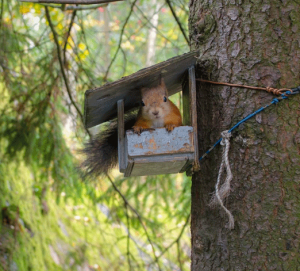
Gardens and Lawns
Gardens and lawns are perfect for burying and digging up food. They wouldn’t care how beautiful your garden is, they’ll leave it dotted with holes sooner than you can watch your first flower bloom! They’ll chew on barks and shrubberies, and landscaped bushes and garden plants are easy food for them. They’ll also destroy bird feeders just to get the seeds inside.
Squirrels are voracious feeders, and they love fruits and vegetables. One thing about them is that, like us, they tend to wait until the fruit or vegetable is ripe before they eat it, making it much more heart-breaking to find your ripe fruits and veggies eaten by squirrels. The love, energy, and time you spent making your lawn or garden beautiful will quickly go to waste if you have a squirrel infestation.
They’re known to chew on almost anything from wood to metal and plastic, so be vigilant and look for signs of an infestation. A few signs you can look out for are the following:
- Loud noises such as banging and thumping in the attic
- Large chunks of insulation is missing
- Heaps of insulation in a corner (often used as nests!)
- Gnaw marks on wood, cables, pipes, etc.
- Brown, cylindrical droppings
- Tracks and scratch marks
